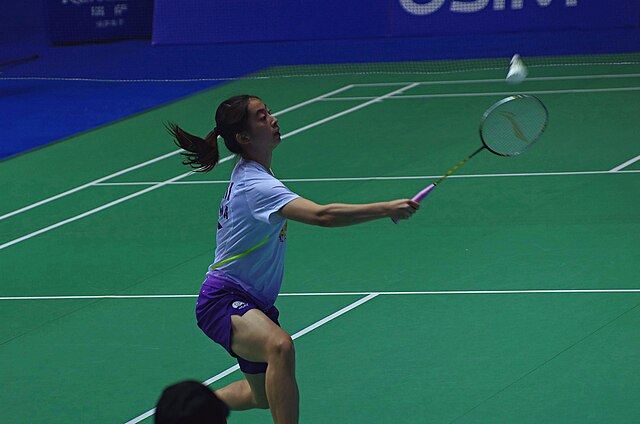
Thammasat University students who are interested in cultural sociology, gender studies, sport sociology, fashion, feminism and related subjects may find a newly available book useful.
The Ponytail: Icon, Movement, and the Modern (Sports)Woman is an Open Access book, available for free download at this link:
https://directory.doabooks.org/handle/20.500.12854/96257
Its author is Associate Professor Trygve B. Broch, who teaches at the Department of Public Health and Sport Sciences at the Inland Norway University of Applied Sciences (INN University) in Elverum, Norway.
The TU Library collection includes other books about different aspects of hairstyles.

A preface to the book by the series editor, Professor Jeffrey C. Alexander, who teaches sociology at Yale University, New Haven, Connecticut, the United States of America, states:
Trygve Broch has written a singular work of cultural sociology, deft and original in its theorizing, richly insightful in its empirical interpretation. Reading such a powerful book wakes us up; we look at social life afresh. We see new meanings; we feel new aesthetical forms; and by understanding how meaning and form are intertwined we conceptualize in new ways. Broch’s empirical topic seems at frst glance thoroughly mundane. A mere object, the ponytail is, in material terms, a mere clump of dead hair. But the premise of Broch’s radical rethinking is that this object is thoroughly alive in a cultural sense. Material and symbolic at the same time, the ponytail icon has an aesthetically shaped sensual surface, like a painting or sculpture, that contains a depth flled with myths, codes, and narratives. The ponytail is a material symbol that inspires passion, compels new meanings, and changes social life. As an iconic object, the ponytail is a cultural structure whose meaning and feeling imposes itself upon social actors— women and men, children and adults, athletes and fashionistas—from the “outside.” Broch unfolds this structure in exquisite detail, displaying its multiple meanings. While he persuades us that the icon contains vestiges of archetypical myth, his research makes a persuasive case that the ponytail has also been a carrier for the striking new discourses that have emerged from the cauldron of contemporary feminisms. Broch argues that the ponytail is not only a symbolic structure, but that it must also be performed if its symbolic power is to be maintained. Describing icons as an “ongoing social achievement of polyvocal objects that speak to and shape situations,” he conceptualizes women and girls as social agents. They wear ponytails, fashioning themselves as women athletes, executives, and intellectuals who “sport” a certain style of hair. It is by emphasizing the agency of the ponytail’s self-fashioning that Broch conducts a highly illuminating dialogue with “critical theories” of sport. He argues that in subordinating material meaning to power—gendered, economic, political—such critical theory diminishes the agency of women. Material symbols have relative autonomy from social structures. When active women style their hair in a ponytail, they reach beyond putatively deterministic social structures to engage independent, suprastructural, “transcendent” meanings, which they shape into a material form and perform to social audiences. How do we know that such meanings actually exist as relatively independent cultural structures? Here Broch displays his hermeneutical skills as an empirical cultural sociologist. From the last seven decades of Western symbolic life, he has culled 4000 pages of written and visual material, from the sports pages of newspapers, fashion magazines, style columns, advertisements, television, song, and flm. Wading into the thicket of interpretation, he has reconstructed the shapes and meanings of the ponytail in its fantastically polyvalent forms. Rather than reading the meanings of the ponytail off social structures of power, Broch has let women speak for themselves. In The Ponytail: Icon, Movement, and the Modern (Sports)Woman, Trygve Broch has set a new standard for studying materiality in social life. He has conducted a master class in cultural sociology.

The author’s Introduction to the book notes:
As an icon, the ponytail is not simply a thing, but a meaningful object that shapes social life through combinations of material and symbolic forces. It has qualities that connote something larger than itself—its dramatic, lasting public presence and the expression of sacred meanings that make it contagious and attractive. Consider the clip-on platinum plaited ponytail that 1990s popstar Madonna wore, which recalled the femininity of earlier wearers, but which was dramatically adapted to female empowerment and copied by her many fans. But iconic experiences also can be intimate, personal, minuscule moments. The ponytail brushing the skin can awaken anticipations and memories of movements. As it distinguishes between those who wear it and those who do not, the ponytail can make someone feel socially powerful or powerless. A ponytail might consist of shafts of hair that are biologically dead, but myths, codes, and narratives animate it with iconic forces. To be sure, no study of the ponytail, let alone hair, can be done without thinking through issues of gender. In December 2018, BBC News journalist Helen Whitaker declared the ponytail an iconic hairstyle for women—one with a “feminist undercurrent, implying ‘I’m busy, I’m working, and need my hair OFF my face.’” […] Although she goes on to trace the ponytail’s historical recurrences in pop culture, Whitaker never explains how or why the hairdo came to materialize these fundamental feminist/anti-feminist paradoxes. […] The dictionary definition of a ponytail—or West’s “memorable mane”—is “a hairstyle pulling the hair together and usually banding it at the back of the head to resemble a pony’s tail,” which, according to Wikipedia, is often worn in informal office settings or when exercising. The ponytail is popular among school-aged girls because flowing hair is associated with youth and simple to accomplish unassisted, at least when not braided or accessorized. A practical choice for keeping hair restrained, the ponytail is also the hallmark of long-haired athletes and others who are physically active in play or work. Sometimes long hair is even required to be tied up for safety reasons in wood shops, labs, sports, and hospitals. As a fashion statement, a high ponytail may connote a sporty person, a low one a chic personality. According to Sherrow’s cultural history, Encyclopedia of Hair, the earliest depiction of women with ponytails is found on fresco paintings from ancient Crete, thousands of years old: “These images show women wearing their hair pulled up away from the face and secured high on the back of the head.” Women dancers in ancient Egypt and Rome wore similar hairstyles, Sherrow wrote, but most historical accounts of ponytails are about men.

(All images courtesy of Wikimedia Commons)
